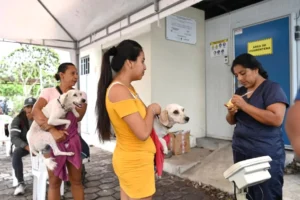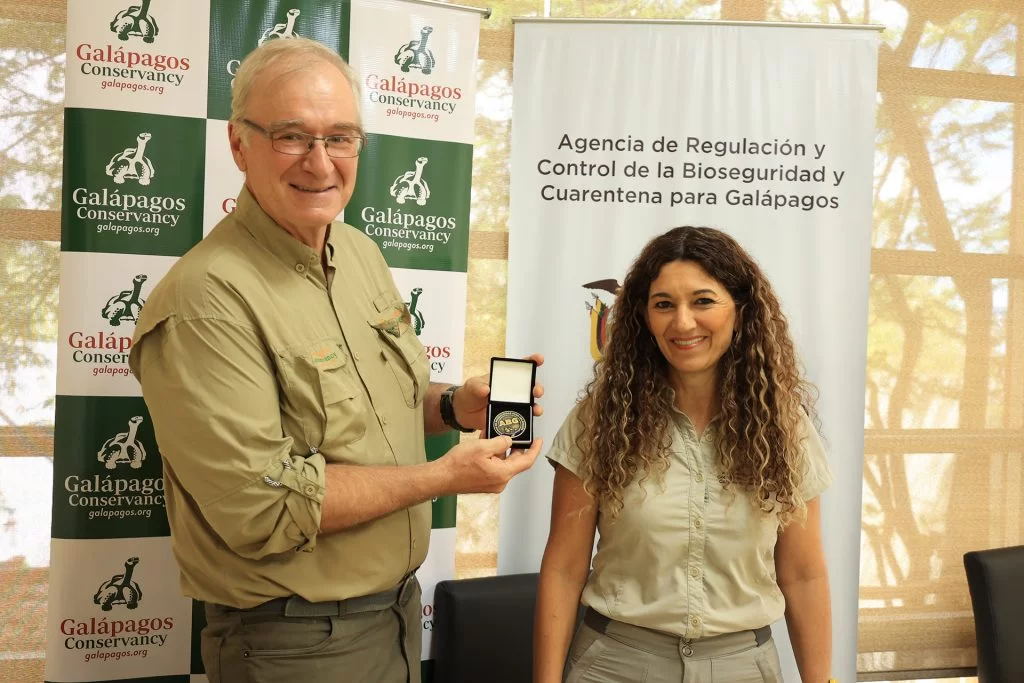Galapagos Conservancy received recognition during the donation ceremony, for its commitment to the long-term conservation and protection of the Galapagos ecosystem and species. Our President, Dr. James Gibbs received an honorary badge in recognition of his outstanding contribution to biosecurity from the Agency of Biosecurity and Quarantine Regulation. This event highlighted not only the importance of collaboration between organizations and local government, but also Galapagos Conservancy’s crucial role in the archipelago. It also emphasized the vital link between teamwork and institutional support and the conservation and biodiversity of Galapagos.
Innovative Microchips Improve Pet Management

Microchips, despite their small size, are highly effective at providing unique and permanent identification for pets. These microchips, which are usually implanted beneath the skin of the neck or nape, do not harm or cause pain to animals. These chips store an electronic unique identification number which can be read by a radio-frequency identification (RFID scanner). This technology securely links the animal with its owner’s information and its identity.
Washington Tapia has highlighted the importance of this contribution. He said: “This initiative will help improve the proper management for domestic cats and dogs on the populated island and protect our unique biodiversity.” This donation is an important step in addressing the issue of stray cats and dogs interacting with native species.
Positive Impact on Urban Coexistence and Conservation
Donating microchips has many benefits. They not only improve the health of communities, but they also benefit wildlife and local communities in Galapagos. Microchips help to speed up the reunion between lost pets and their owners. This reduces stress for both animals and owners.
These devices are more effective in management because they provide vital information for monitoring stray animals and sterilization campaigns. A microchipped animal may also discourage owners from abandoning animals and encourage more responsible care.
The microchip is essential to ensure pet ownership laws are adhered to. Microchips help to adhere to the existing rules and create a more orderly and respectful urban environment. They also improve the quality of our pets’ lives and their well-being.
Microchips will help improve the management and control of Galapagos animals. According to the Agency of Biosecurity and Quarantine Regulation of Galapagos a comprehensive pet census is currently underway in each of the province’s cantons. All pets must be microchipped in order to prevent inter-island travel and the illegal importation of dogs and cat into Galapagos.
Galapagos Islands: A Sustainable Alternative
We are committed towards sustainability, conservation of iconic species and support for institutions that help manage the Galapagos Archipelago. The importance of collaboration is illustrated by our recent donation to the Galapagos Biosecurity Regulation Agency. Galapagos Conservancy aims to foster harmonious coexistence of humans and the incredible wildlife on this archipelago.



